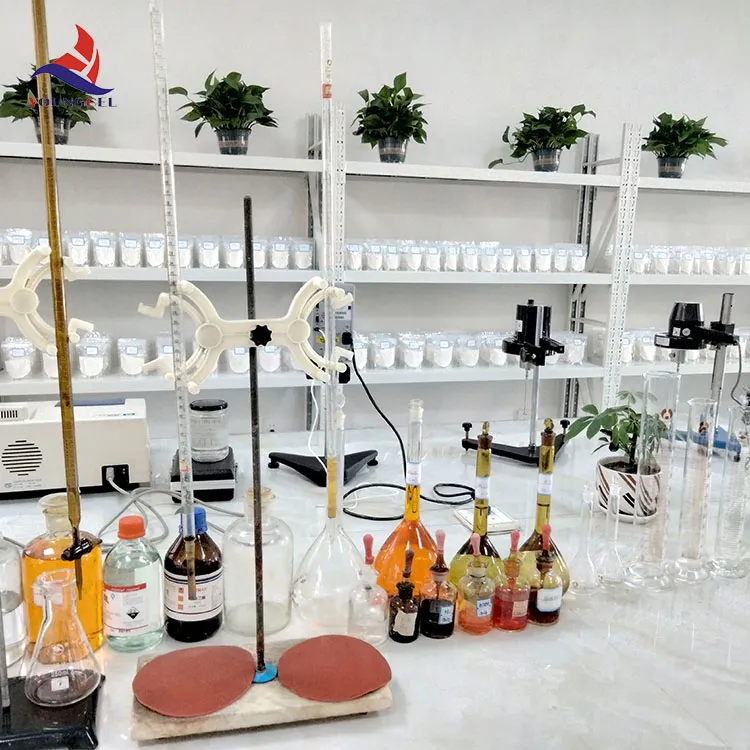Understanding RDP Powder An Overview
RDP powder, or Redispersible Polymer Powder, is a vital component in the construction and building materials industry. As an essential additive used in various applications, its properties significantly enhance the performance of different products, including tiling adhesives, cement-based mortars, and self-leveling compounds. This article delves into the characteristics, benefits, and applications of RDP powder, shedding light on its pivotal role in modern construction practices.
What is RDP Powder?
RDP powder is a fine white powder that consists primarily of polymeric materials, which have been specially formulated to disperse in water. The primary purpose of RDP is to improve the flexibility, adhesion, and water resistance of cementitious compositions. When mixed with water, it forms a stable dispersion that can be integrated into various construction materials, enhancing their performance characteristics.
Key Properties of RDP Powder
One of the standout features of RDP powder is its ability to significantly improve the mechanical properties of mortars and adhesives. The addition of RDP enhances flexibility and workability, making it easier to apply materials to surfaces. Furthermore, it contributes to better adhesion, allowing products to bond more effectively to various substrates such as concrete, ceramics, and metals.
RDP powder also provides increased water resistance, which is crucial in ensuring durability and longevity for construction products. This is particularly important in regions exposed to moisture or harsh weather conditions. Additionally, RDP enhances the thixotropic properties of mortar, allowing it to hold its shape and resist slumping during application.
Benefits of Using RDP Powder
The integration of RDP powder into construction materials offers numerous benefits. One of the most significant advantages is the improved adhesion strength, which not only ensures effective bonding during application but also enhances the overall durability of the finished product. This leads to reduced maintenance costs and an extended lifecycle for structures.
rdp powder

Another benefit is the increased workability of mortars and adhesives. The flexibility afforded by RDP makes it simpler for applicators to achieve smooth, even finishes, which is essential for aesthetic purposes as well as for functional performance.
The use of RDP powder can also aid in reducing the amount of water needed in formulations. This not only contributes to more sustainable construction practices by minimizing waste but also helps in improving the overall mechanical performance by reducing the risk of pore formation and related issues in the cured material.
Applications of RDP Powder
RDP powder finds diverse applications across various segments of the construction industry. It is commonly used in tile adhesives, where its properties facilitate the installation of tiles on different surfaces. The enhanced adhesion and flexibility help prevent issues such as tile cracking or detachment over time.
In the realm of cement-based mortars, RDP powder is employed in applications ranging from plastering to repairing and leveling surfaces. Its ability to improve water resistance and workability makes it ideal for these tasks, particularly in challenging environments.
Furthermore, RDP has growing applications in the production of self-leveling compounds, where it supports the creation of smooth, level surfaces essential for flooring.
Conclusion
In summary, RDP powder is a critical component in the modern construction industry. With its unique properties, it enhances the performance of various building materials, contributing to improved adhesion, flexibility, and water resistance. As construction practices continue to evolve, the role of additives like RDP powder will only become more significant, driving innovation and sustainability in the field. Understanding and utilizing RDP powder effectively can lead to higher quality outcomes in construction projects, making it an invaluable resource for builders and manufacturers alike.
-
Premium Detergent Grade HPMC Hydroxypropyl Methylcellulose: Superior Thickening & StabilityNewsAug.31,2025
-
HEC 100000 Hydroxyethylcellulose for Paint | Superior ThickeningNewsAug.30,2025
-
Wall Putty Rdp Powder Packaging DesignNewsAug.29,2025
-
Introduction to Hpmc Hydroxypropyl Methyl CellulosNewsAug.29,2025
-
Hpmc Industri Grade IntegrationNewsAug.29,2025
-
How to Choose the Right Construction AdhesiveNewsAug.29,2025




